In this age of global communication there are still clearly distinct differences between the Orient and Occident. Photographer, Scott Dietrich, based in Hong Kong diligently seeks out people and place in the spirit of early 20th century street photographers. The COMP Magazine finally caught up with this itinerant photographer to discuss making pictures of people, the culture of hunting in Indonesia and the impact of tourism on West Sumatran heritage.
You’ve been producing photography in a variety of places for the better part of 20 years. Can we start with how the experience of travel has impacted the way in which you produce your work?
SD: As a starting point for this I can safely say that I have made roughly 3 portraits (not including self-portraits) as an artist and photographer in the 15 years prior to my travels in Asia. I now consider myself a maker of portraits and look for them avidly when I travel. This is a significant change in my practice as a photographer. I have been traveling most of my life, first as the child of a U.S. Army officer and then on my own as a student and artist. Travel is an important part of my life and informs the vast majority of my creative output. My recent travels have spanned the last 6 years and have been primarily in Asia. When I began my first trip to Asia people and the portrait where not a concern for me, I was looking at architecture and the built environment and I was not paying much attention to the builders of either one. So, the cliché that travel broadens your horizons is true but a little too simple. When you travel outside of your home country and into a place that is entirely foreign you rely on the people of that country, town, village or even bus station or wherever you find yourself to offer you help and assitance. Not just to help you find the right bus or a good restaurant but to help you gain an understanding of the culture, heritage, rituals and all the other little details that appear to be mysteries, like that spray hose next to the toilet where there should be toilet paper. In the end these details are not mysterious at all but just new and the real joy in traveling is learning what exactly that spray hose next to the toilet is for and how to use it. What I have discovered is that without the people you meet along your journey, you are truly lost. So now, after so many years avoiding it, I am a maker of portraits. How could I not create images of such an integral part of my travel experience?
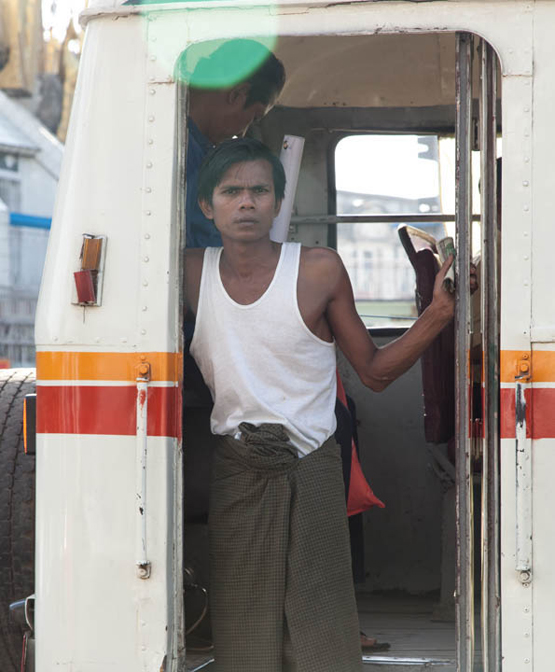
Scott Dietrich, Working the Busses, Yangon, Myanmar, 2014
You are currently living and working in Hong Kong. There are obvious cultural differences between the Occident and Orient. Are there any specific items that you find to have influenced the way you think about image making?
SD: My stereotypes of what is eastern and what is western have been both confirmed and then torn apart on a daily basis. To explain this a little I need to talk about the images I have seen here and the images I choose to make on a regular basis with my phone. What I discovered in the first few months of living in Hong Kong is that a majority of the images I saw coming out of Hong Kong prior to moving here were often not made by local photographers and subsequently reinforced a cultural stereotype that is so strong in the western psyche it is hard to not get stuck in making images that reinforce those ideas. It is easy and I must admit fun, to make images that you know will lead to the warm fuzzy feeling about Hong Kong; red lanterns, incense burning in the temple, busy streets full of shoppers and neon lights. My phone was full of these images when I first arrived. These types of images are truly a part of Hong Kong but just a small part. Being exposed to the image makers and artist who day in and day out photograph their city has torn down those stereotypes and made them something I can laugh at and have fun with but they also make me drive towards a deeper understanding. Never having been the type of person to walk around with a camera all the time I have found that the camera in my phone has made me more observant and has helped me gain that understanding. As an example; my documentation of the recent Occupy movement in Hong Kong was done with my iPhone. The phone is not invasive and so ubiquitous it allows for a type of spontaneity that I can never get with a professional camera system. All that being said, I still find myself making images that I think are too superficial. One of the strategies I have adopted with the portrait and one I require of my students when they travel abroad, is that I talk to the subject or at least have some kind of meaningful exchange while making the image. This strategy is not a new one and seems obvious but it helps avoid the stereotypes and leads to stronger images.
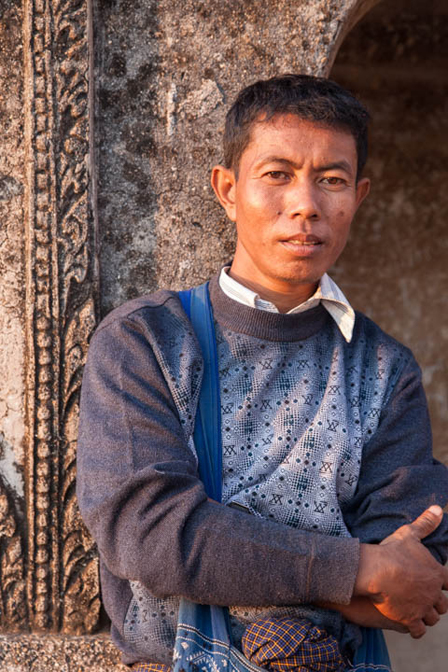
Scott Dietrich, Tour Guide, Bagan, Myanmar, 2014
One of your current projects is The Culture of Hunting, documenting Indonesian hunting clubs in West Sumatra. Can you provide a background on this effort and what drew you to this subject?
Also, another current project is Villages of Yuanyang. The images appear to be almost time capsules in a time of transition. Is this a correct reading? Where is Yuangyang? How did you discover this place? What do you hope to convey in this document?
The two current projects you highlight are both destinations I found myself in while primarily looking for local heritage and cultural history. The men and dogs featured in The Culture of Hunting are part of life in the mountains of West Sumatra, Indonesia. I found myself in the town of Sawahlunto, West Sumatra along with my wife, Jeanne Lambin, during a course she taught for the University of Florida that focused on heritage tourism and development. I was looking at an architectural heritage of mining and colonialism, primarily photographing architecture and the landscape of the villages and towns. I met the men and their dogs as part of this larger mining community and simply found them visually fascinating. I was intrigued by the formal portrait at that point (see the first question) and that is what the project became about, not a visual narrative of hunting but a study of the men that make up this subculture. It really is a straightforward project at this point, whether or not it will grow beyond these simple portraits, I am not sure.
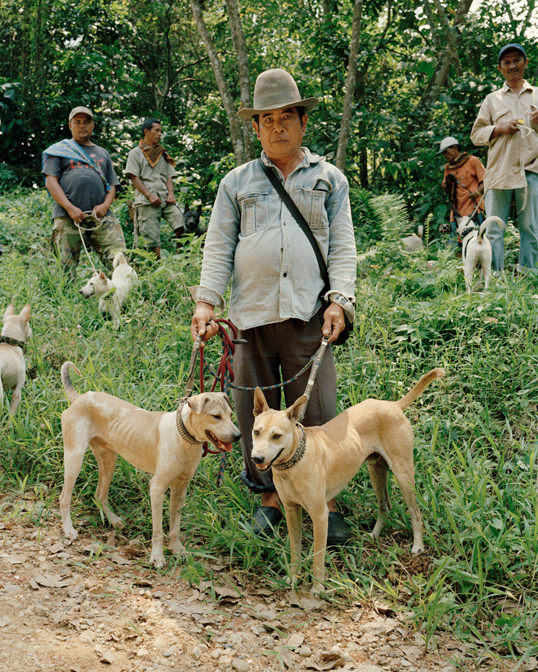
Scott Dietrich, Untitled, Hunter with Group, Sumatra, 2013
The Villages of Yuanyang is a larger project. The villages that I am spending time in are in the recently inscribed UNESCO world heritage site in the Yunnan province of Chine near the Vietnam border. Officially known as The Cultural Landscape of the Honghe Hani Rice Terraces the area is home to a unique self-sustaining way of life that shows a remarkable balance between the landscape and the people who have been cultivating it for over 1300 years. Hani, Yi and several other ethnic minorities call the region home and contribute to its’ cultural heritage. Well documented in some ways and “protected” by UNESCO and the Chinese government, the area has become a tourist destination and is facing the inevitable changes that go along with the outside pressures of modernization. Your observation that the project is a sort of time capsule is correct. My only real goal with the work is to be observant and present during this time. As an outsider to this community I am at both a disadvantage and an advantage when it comes to seeing the changes taking place. The disadvantages are clear, language and cultural barriers provide a certain naivety that I must struggle to get past. At the same time my outsider status can allow me to see the everyday as unique and often amazing, what can be overlooked by the people who are experiencing change can often be some of the most compelling details that will be lost as the area jumps headlong into the contemporary age of cell phones and satellite TV. My thought process for this project is long. When I think about what I want it to represent and accomplish, I think years and even decades into my future. For now, I will readily admit that I do not feel the project has found a voice of its own, maybe after my next trip to Yunnan the project will start to show signs of life.
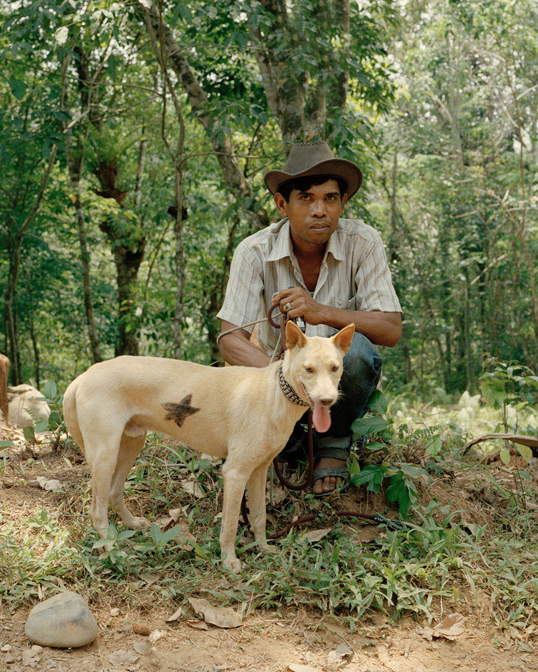
Scott Dietrich, Untitled, Dog with Star, Sumatra, 2013
Do you have plans to stay in Asia, has it become home? What are your future plans?
SD: Right now I have no plans to leave Hong Kong. Is it home….for now. Future plans (in between my teaching schedule) are to travel and make more work and travel some more. We just got back from our first trip to Myanmar, formerly Burma, lots of amazing people in Myanmar, I made some portraits.
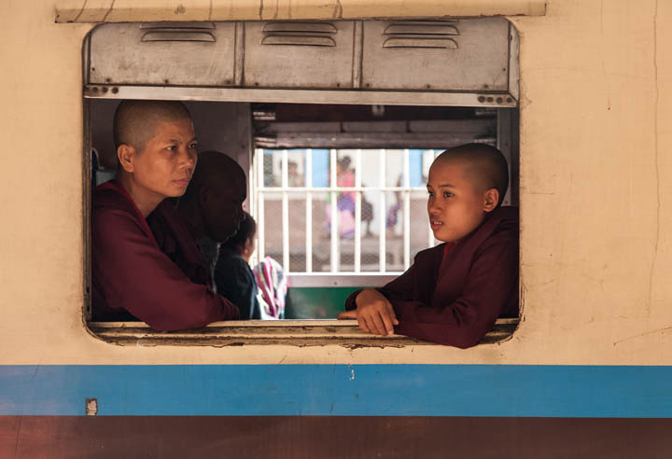
Scott Dietrich, Monks Waiting to Depart, Yangon, Myanmar, 2014
Scott Dietrich is a Professor of Photography in the Department of Fine Arts at the Savannah College of Art & Design’s Hong Kong campus. Scott has traveled extensively throughout the United States and Asia documenting a range of subjects indigenous to the region. If not on the road, Scott is possibly working with his students in the streets of Hong Kong.
Additional information on the work of Scott Dietrich can be found at:
Itinerant – Photo: http://www.itinerantphoto.com/
Additional images by Scott Dietrich’s current projects:
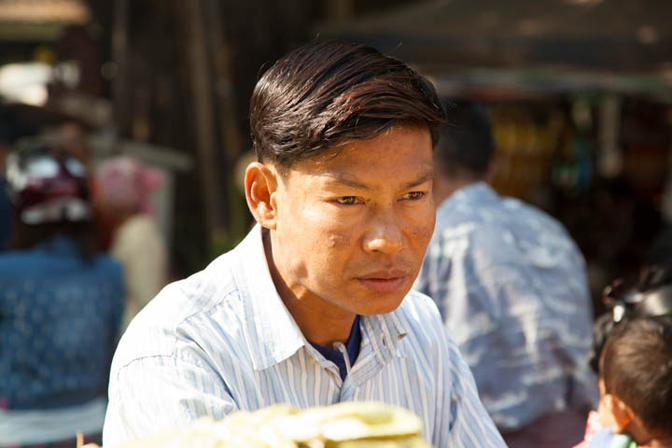
Scott Dietrich, Unititled Portrait, Mandalya Market, Myanmar, 2014
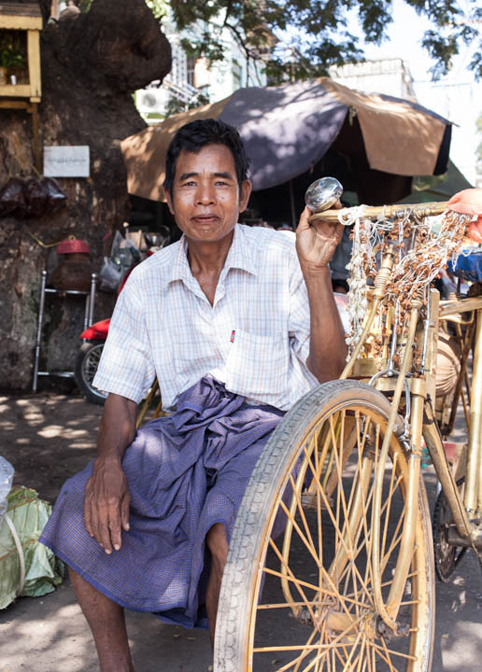
Scott Dietrich, Man with Gold Bike, Mandalay Market, Myanmar, 2014
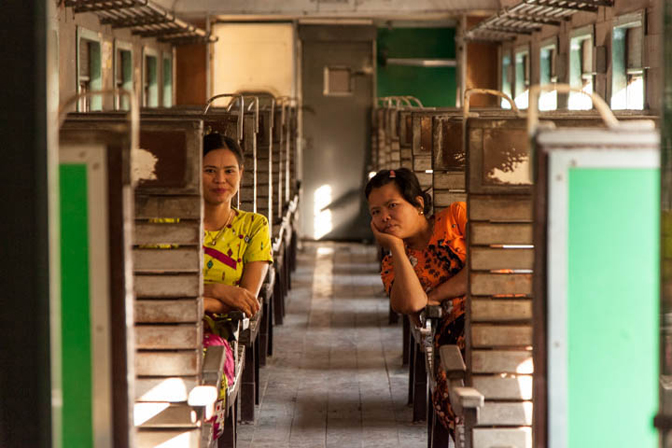
Scott Dietrich, Riding “Ordinary Class”, Yangon, Myanmar, 2014
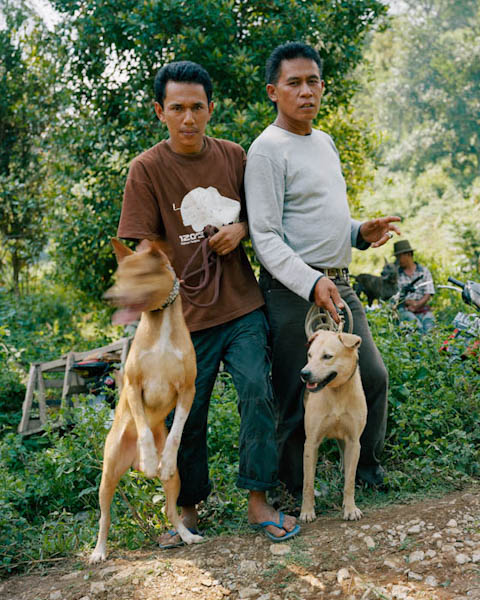
Scott Dietrich, Dhimas & Ahjee, Sumatra, 2012
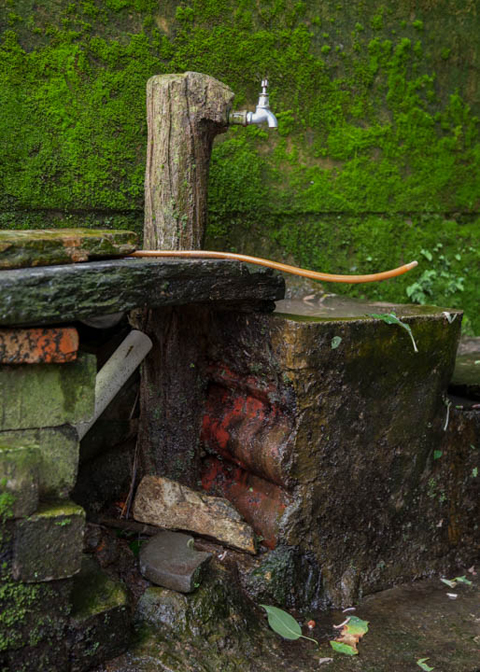
Scott Dietrich, Water Faucet, No. 1, Yuanyang, China, 2013
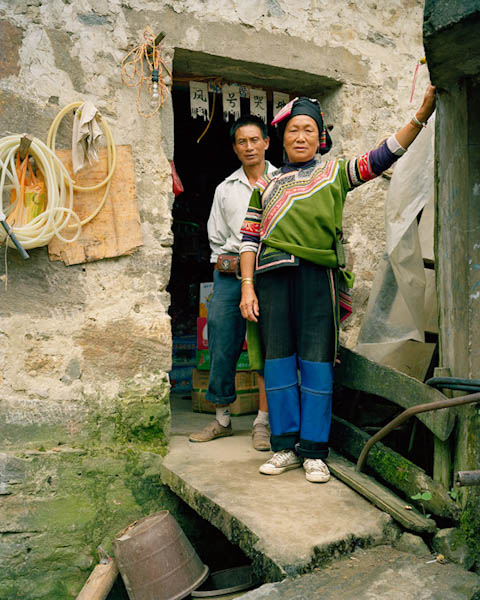
Scott Dietrich, Store Owners, Yuanyang, China, 2012
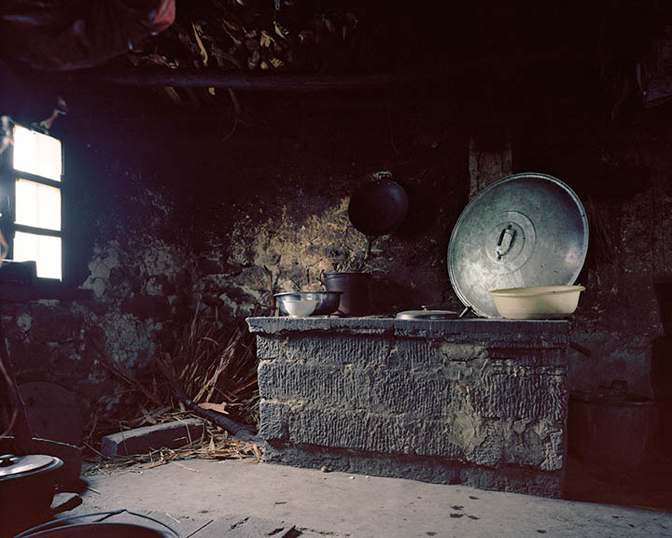
Scott Dietrich, Kitchen, Yuanyang, China, 2013
Interview by Chester Alamo-Costello


